Large exercises, new aircraft and test flights: January in military aerospace
The first month of 2023 has been marked by several large-scale exercises and a long-awaited decision by the Canadian government.
As this is the first in what will likely become a monthly newsletter, I want to briefly explain the structure. It’ll start with the two biggest stories of the month, followed by a list of the smaller news stories. The newsletter will end with noteworthy military orbital launches and launch statistics of January. Enjoy this first edition and feel free to reach out with your thoughts and/or suggestions!
On January 9, the Canadian government announced it finalized a deal to acquire 88 of the latest Lot 18, Block 4 F-35A Lightning II jets to replace its aging fleet of CF-18 Hornets. The Canadian Ministry of Defense stated that deliveries are anticipated to begin in 2026 and that the entire fleet of F-35s will reach Full Operational Capability between 2032 and 2034. Discussions about Canadian F-35s have been ongoing since the late 1990s but have been continuously delayed. During his campaign to become president in 2015, Justin Trudeau publicly promised not to acquire the F-35 because of high cost and inaccurate budgeting. However, his government has now finally agreed to spend approximately $19 billion Canadian dollars for the largest investment of the Royal Canadian Air Force in the past 30 years.
This month has also been marked by the ‘‘biggest joint U.S.-Israel exercise in history.’’ Juniper Oak 23.2 was a large-scale ‘‘combined joint all-domain exercise’’ held in Israel and the eastern Mediterranean Sea. More than 142 aircraft, including U.S. aircraft operating from the aircraft carrier USS George H.W. Bush and its accompanying strike group, and B-52 Stratofortress bombers, participated in the exercise. Several space assets in low Earth and medium Earth orbit were also placed under the control of the new SPACECENT component of the U.S. Space Force during the exercise. Juniper Oak 23-2 strengthened the interoperability between U.S. forces and the Israeli Defense Forces, and serves as a strong message to Iran, which is currently supplying drones to Russia and developing its nuclear program.

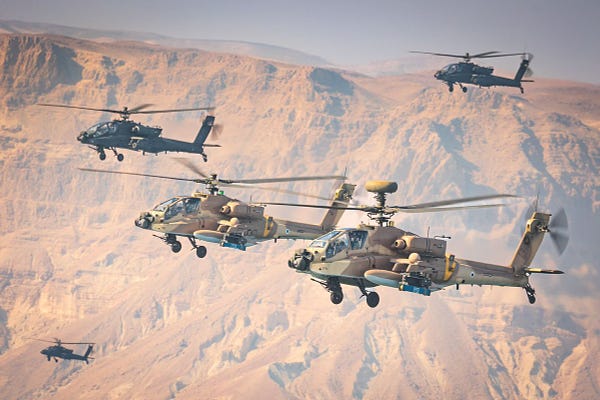
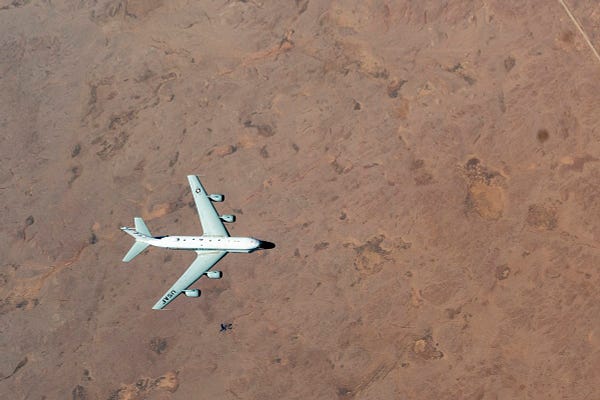
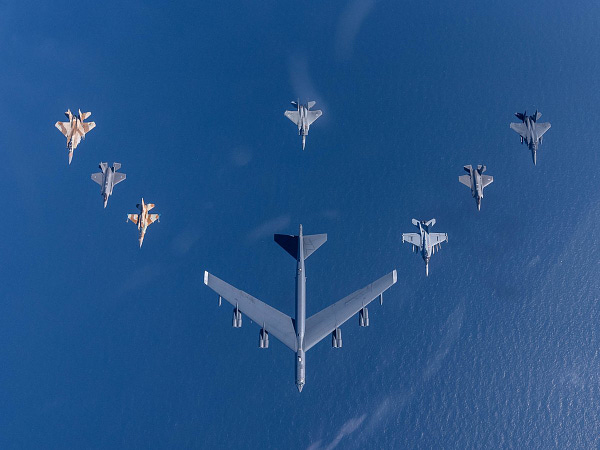
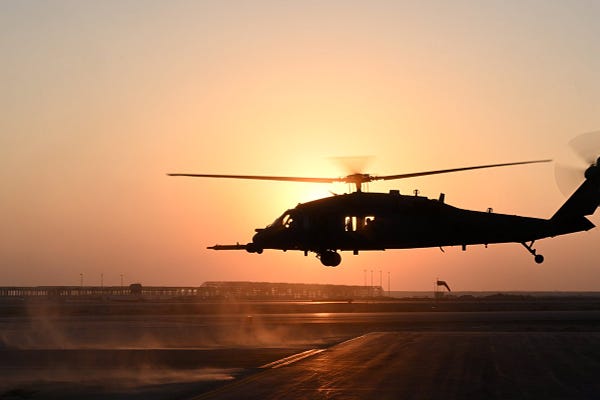
Other news stories
The year started with Israeli air strikes targetting the runways at Damascus airport, followed by an (unrelated) exercise with U.S. Air Force F-15s at Nevatim airbase in Israel. The six jets conducted Agile Combat Employment operations, which included joint flights with Israeli F-35I and Nachshon Shavit aircraft.
On the same day U.S. Air Force F-15s landed in Israel, Japanese fighter jets intercepted a Chinese WZ-7 ‘Soaring Dragon’ surveillance drone for the first time, which was flying near Japan’s southern islands for the second day in a row.
On January 3, the War Zone got confirmation that the new AN/APG-85 radar will be installed on all Block 4 F-35s. A week later, Northrop Grumman confirmed the company is developing the advanced active electronically scanned array radar system.
In the first week of January, the U.S. Air Force released photos of the final RC-26B flight as the service retired the fleet of 11 aircraft. The RC-26B had been primarily supporting counter-drug operations but has been used for a wide range of missions.
While the RC-26B is now retired, the U.S. Air Force confirmed that the F-117A Nighthawk fleet will continue flying until 2034. The stealth aircraft will support research and training activities, according to a statement by an Air Force spokesperson.
The U.S. Air Force shared details of two flight tests in early January. On January 4, details were released of a November 2022 test with two F-15EX Eagle II jets. The jets launched air-to-air missiles from their new weapon stations, demonstrating the ‘‘aircraft’s missile capacity of 12 air-to-air missiles.'' On January 6, an F-35 conducted the first test flight in the Technology Refresh 3 (TR-3) configuration. The TR-3 configuration significantly updates core processing power and memory capacity to support new Block 4 capabilities.
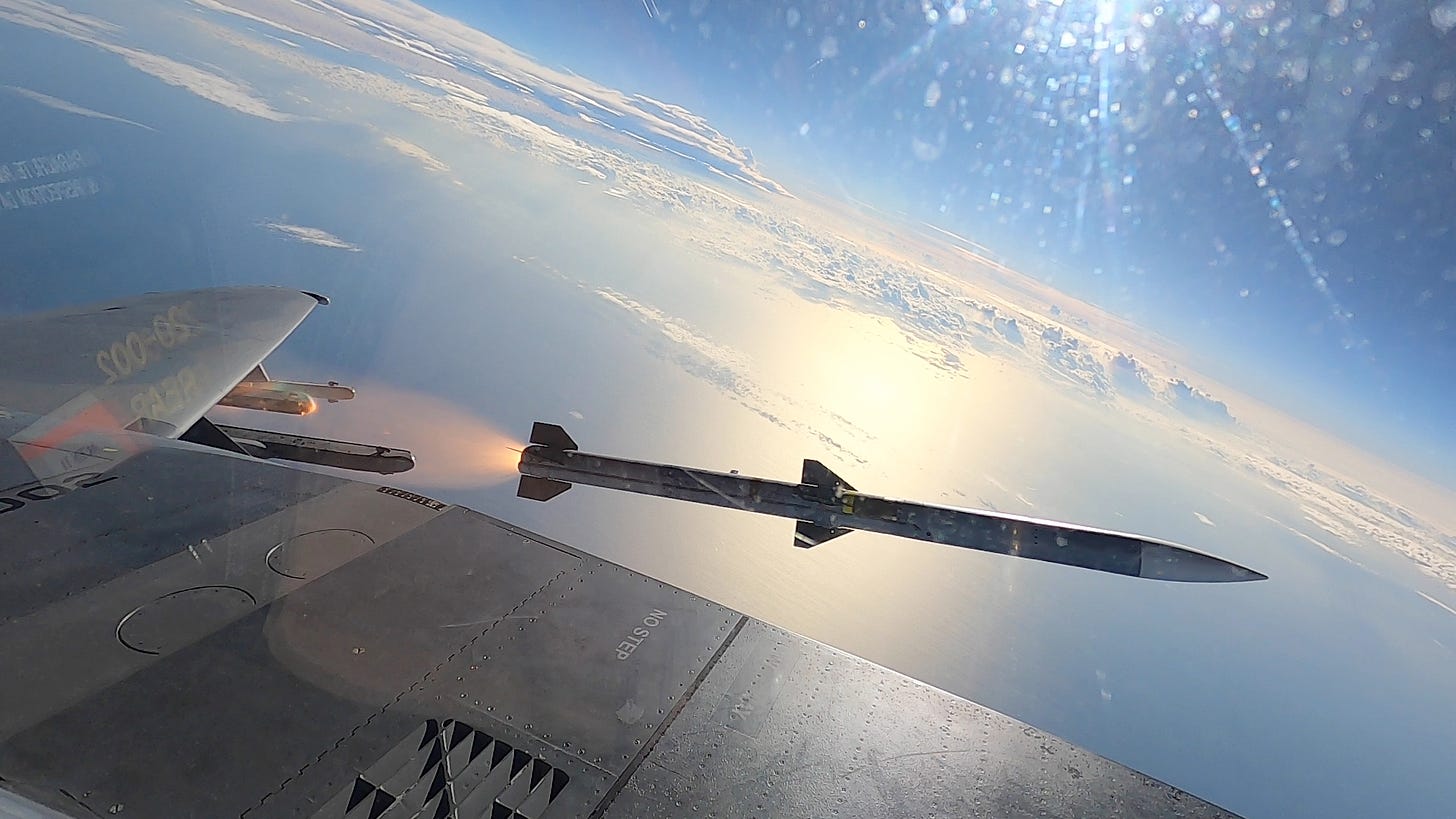
While the U.S. Air Force continued testing new capabilities, the Russian military reportedly took delivery of the first modernized Ka-52M helicopters. A TASS source reported that ‘‘about ten helicopters were supplied for the Russian army aviation.’’
While the violent clashes in Mexico after the arrest of Ovidio López, the son of a prominent cartel leader in Mexico, is not aviation news, it saw several military aircraft, including light attack planes, being used as close air support platforms. There were no reports of any hits on government aircraft, but an Aeromexico Embraer ERJ-190LR airliner, with crew and passengers aboard, was hit by gunfire at Bachigualato Federal International Airport in Culiacán. Luckily, no one was wounded during the incident at Culiacan Airport.
A few days later, on January 8, photos emerged of 160th SOAR helicopters flying over Mexico City. The specialised helicopters were there to support the security detail during the North American Leaders’ Summit, which was attended by, among other officials, President Biden, Canadian PM Trudeau and Mexican president Obrador.
Less than 3,000 kilometres to the northeast, the U.S. Air Force’s Air Mobility Command conducted a large mission generation exercise named Mobility Guardian 23 in early January, including a spectacular flyby of 24 C-17 Globemaster III aircraft. The exercise, which included F-16 jets and AH-64E Apache helicopters, focussed on agile combat employment and ‘‘the ability to project overwhelming air power and superiority in a short timeframe.’’
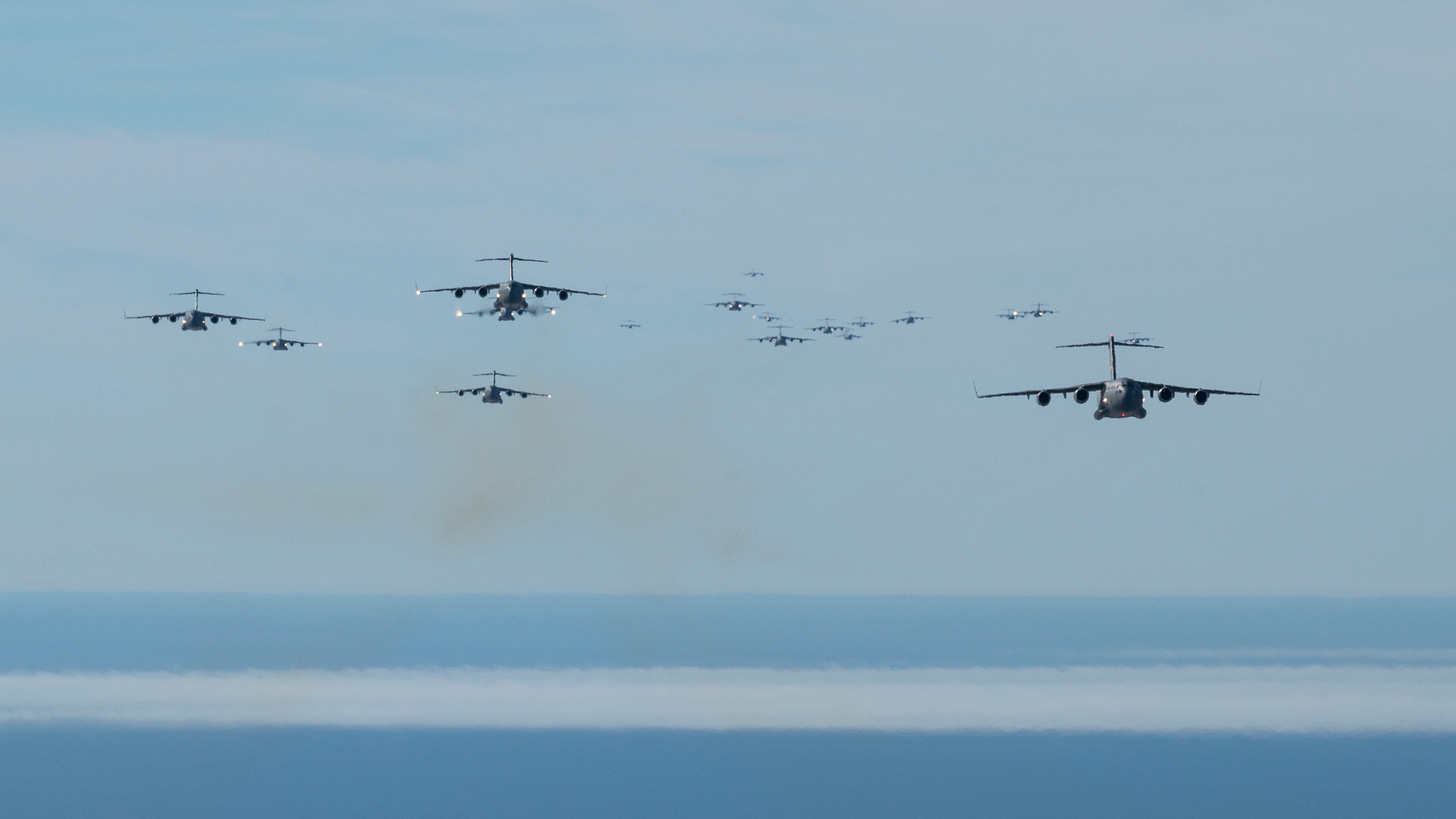
In more transport aircraft news: the United States handed over the third C-130H Hercules to the Niger Air Force in early January. The new transport aircraft, which is the last of three scheduled C-130 deliveries, ‘‘will be used to train elements of the Niger Air Force.’’
On January 10, Lockheed Martin presented their plans to fire their Patriot PAC-3 surface-to-air missiles from Mk-41 Vertical Launch System cells. The ability to do so would introduce new employment of the missile system, including on dozens of current and future warships in service around the world and on ground-based systems.
That same week, a Royal Canadian Air Force C-17 transport aircraft landed in Haiti to deliver Haiti-purchased armoured vehicles to the Haitian National Police. Late last year, I found an airlift of dozens of C-130 flights to Haiti. Sadly, airport employees were banned from taking photos and videos shortly after, but it looks like military transport aircraft are flying to Haiti again. I will try to update the thread later this week (and maybe make a dedicated Substack post in February).
On January 12, the 354th Fighter Wing at Eielson Air Force Base in Alaska took delivery of the first two F-16 jets acquired from Dannelly Field Air National Guard Base, Alabama. The jets with upgraded avionics were the first scheduled to arrive throughout 2023 to replace the aircraft currently assigned to the 18th Aggressor Squadron.
On the same day of the F-16 delivery, a contracting notice revealed the US Army is looking into adding a second type of interceptor to its future Enduring Shield air-defence systems. The system is currently slated to launch AIM-9X Sidewinder missiles, but the second type is intended to be capable of intercepting supersonic cruise missiles and large-calibre artillery rockets.
Later in January, DARPA announced that it selected Aurora Flight Sciences, a subsidiary of Boeing, to move into Phase 2 of the CRANE program. The Control of revolutionary Aircraft with Novel Effectors program aims to develop and fly an X-plane demonstrator that can fly without traditional moving flight controls on the exterior of the aircraft. The agency also announced a four-year program to ‘‘investigate liquid-mirror technology as an alternative to glass or beryllium optics,’’ which are easier and cheaper to fabricate, more resilient to damage and have improved scalability compared to regular optics.
DARPA was busy this month because the agency also announced that DARPA and the U.S. Air Force conducted a final flight test of the Hypersonic Airbreathing Weapon Concept program. After separating from a B-52 Stratofortress, the hypersonic missile reached speeds over Mach 5 (6,000+ km/h), flew higher than 60,000 feet (18+ km) and travelled over 300 nautical miles (550+ km). The agency will now continue to develop, build and fly hypersonic vehicles as part of the More Opportunities with HAWC (MOHAWC) program.
On January 15, a U.S. Air Force RQ-4B Global Hawk landed at Larissa Air Base in Greece with suspected communications issues after a regular mission above the Black Sea. The high-altitude, remotely-piloted surveillance aircraft took off from the Greek air base on January 19 and landed there again on January 20. The Global Hawk is now operating out of Naval Air Station Sigonella again, and it remains unclear why exactly the RQ-4B Global Hawk operated out of Larissa Air Base for two missions.
The same day the Global Hawk caught the attention of flight trackers, South Korea and the United Arab Emirates signed a memorandum of understanding to jointly develop a multirole transport aircraft. The MC-X is expected to be designed as an alternative to Lockheed Martin’s C-130 and Embraer’s C-390 Millennium.
While South Korea and the UAE might get a new transport aircraft, Canada decided to delay the replacement program of their small fleet of four CC-138 Twin Otter aircraft. These 50-year-old transport aircraft are extensively used in the Artic, a region with increasing strategic importance.
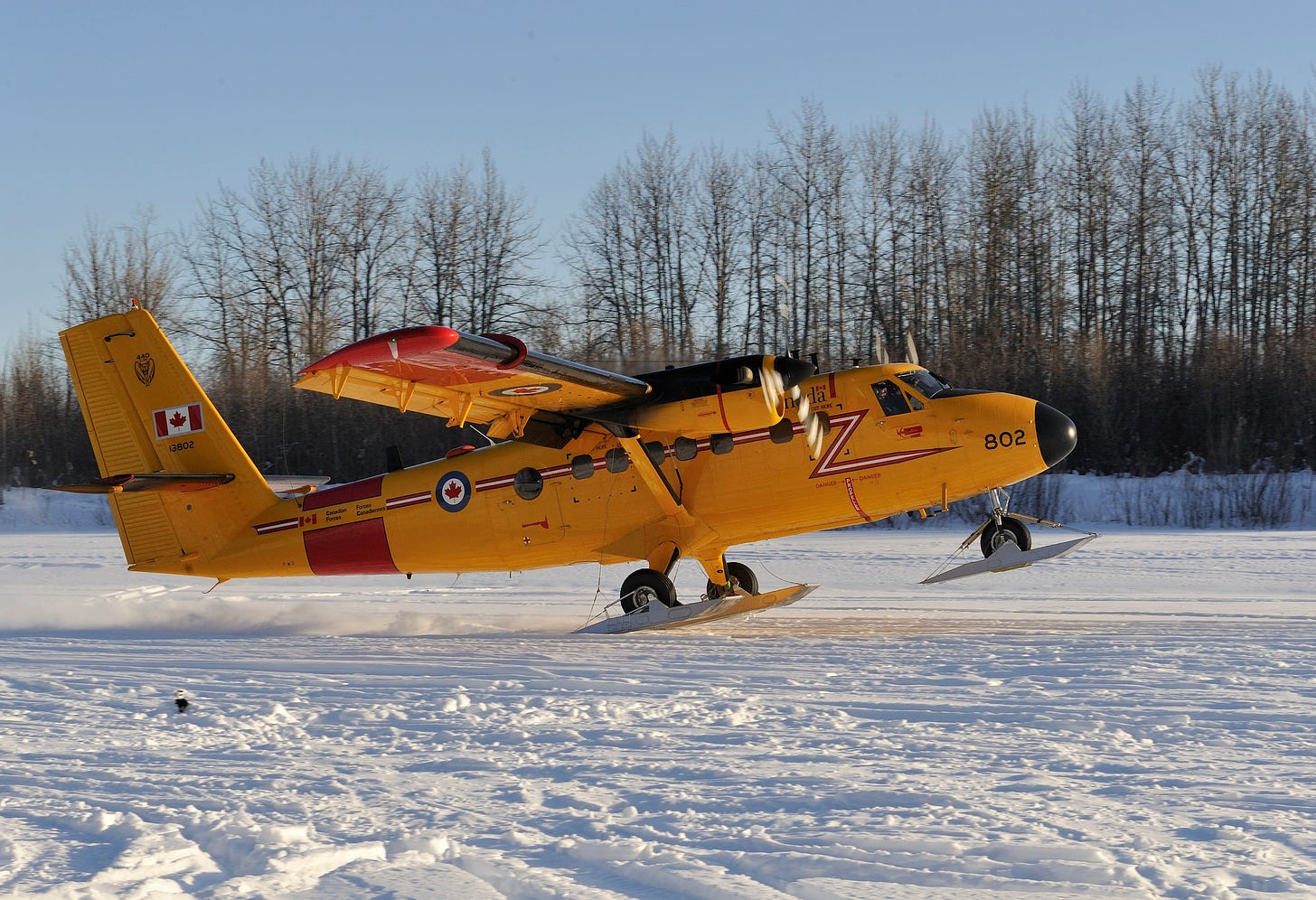
In mid-January, there has been a significant surge in ISR activities off the coast of Libya. A US Army ARTEMIS jet, a NATO RQ-4 Global Phoenix and US Navy E-2 Hawkeye, as well as U.S. Department of State and U.S. Special Operations Command transport aircraft, were seen operating off the Libyan coast shortly after the CIA chief made a rare visit to the country. It’s unclear what caused the sudden increase in ISR activities, but there were reports of Hezbollah relocating militants from Libya to train Russian troops on Iranian drones.
On January 16, the new WC-130R Constant Phoenix ‘nuke sniffer‘ completed an operational mission off the eastern coastline of South America, which was its first air-sampling sortie outside of the Continental United States. This flight, as well as missions off the western coastline of South America shortly after, were baseline collection missions to collect air samples under normal conditions.
On January 17, NATO deployed three E-3 Sentry aircraft to Otopeni Air Base in Romania after the U.S. Air Force deployed two E-3s to Poland. Moving these airborne early warning and control aircraft closer to Eastern Europe reduces the need for aerial refuelling and increases the maximum time on station.
On the other side of the world, the Australian government confirmed the country will acquire 40 UH-60M Black Hawk helicopters for the Australian Army in a multi-billion-dollar deal. The Black Hawks will replace the troubled fleet of European-made Taipan helicopters with "a more reliable and proven system."
Australia isn’t the only country aiming to acquire new aircraft, as unconfirmed sources claimed that the Israeli Ministry of Defense has officially requested 25 F-15EX fighter jets from the United States. If approved, the earliest deliveries are expected in 2028 but the Israeli government may request to accelerate the process.
On January 18, the Dutch Ministry of Defense announced that it has the possibility to accelerate the acquisition of three SIGINT/ESM pods for the MQ-9 Reaper. If the House of Representatives approves before January 31, the first pod will be delivered later this year. If the contracts are signed after March 31, other countries will be given priority in acquiring the SIGINT pods. It’s currently unclear if the House of Representatives already approved the deal or is planning to do so before March 31.
A week later, Lockheed Martin announced that their Directed Energy Interceptor for Maneuver Short-Range Air Defense System (DEIMOS) system achieved ‘first light’ during an undated test of the laser’s optical performance. The tactical laser weapon system is designed to neutralise ‘‘unmanned aerial systems, rotary-wing aircraft and rockets, artillery and mortars.’’
On January 23, the U.S. Space Force’s Space Development Agency rebranded its planned constellations of missile warning and communications satellites to the Proliferated Warfighter Space Architecture. The constellation, which was previously known as the National Defense Space Architecture, increases the survivability of space-based assets.
On that same day in late January, the U.S. Marine Corps released details and accompanying images of a CH-53K King Stallion demonstrating its unique capability by lifting a U.S. Navy F-35C Lightning II jet at Naval Air Station Patuxent River in December 2022. Having this capability would be highly useful during a conflict in the Indo-Pacific, or just for aircraft recoveries in general.

The day after these details and photos were released, the first F-16 Viper in the Block 70 configuration completed its maiden flight. The first flight lasted approximately 50 minutes. The F-16 Block 70 jet that conducted the test flight is the first of 16 jets to be delivered to Bahrain, which is one of six countries that selected the Block 70/72 jets.
In late January, Russia delivered several aircraft to the Malian Armed Forces. The exact number of aircraft is unclear, but photos show five L-39 light attack/trainer jets, two Mi-8 transport helicopters, and a single Su-25 attack aircraft.
While Russia delivered new aircraft to Mali, the first KC-130J tanker-transport aircraft for Germany was rolled out. The aircraft will be part of a joint squadron with the French Air and Space Force. France already operates two KC-130Js and two C-130J-30s, and the deliveries of three KC-130Js and three C-130J-30s for the German Luftwaffe are set to be complete by the end of 2024.
Late January also included several new stories about new aircraft (variants), starting with Boeing sharing a concept for a stealth tanker-transport aircraft with a blended wing-body design. A few days later, Chinese state media claimed that the Chinese military is looking into introducing new variants of the Y-20 aircraft. The Y-20 already has an aerial tanker variant, but early warning, command and control, long-range electronic warfare, and possibly drone carrier variants are now being proposed as well.
Talking about China, the head of the U.S. Air Force’s Air Mobility Command shared a memo urging leadership under his command to prepare for a large-scale war in order ‘‘to deter, and if required, defeat China." The memo also mentions work on developing a concept to launch 100 commercial-of-the-shelf drones from a KC-135 Stratotanker by the end of March 2023. No other details about this concept have been released (thus far).
On January 30, the U.S. Air Force released photos of a December 2022 test flight with the new XQ-58A Valkyrie unmanned combat aircraft. The test flight included a rocket-assisted takeoff, a formation flight with an F-16, and a recovery under parachutes. It’s unclear what the exact purpose of the flight test was, but it did demonstrate the XQ-58’s total runway independence.
The day after, on January 31, General Atomics Aeronautical Systems announced that an air-launched Eaglet drone flew for the first time in December 2022. The Eaglet drone, which is intended to be a low-cost, survivable UAS that extends the reach of sensors and lethal systems, was dropped from an Army-owner MQ-1C Gray Eagle.
The last day of the month was marked by the end of an exercise and the end of an era. The Noble Defender exercise concluded on January 31 and included F-35s deploying to Thule, Greenland for the very first time. In New Zealand, it was the end of an era as the Royal New Zealand Air Force officially retired their P-3K2 Orion aircraft after 57 years of service. Its replacement, the P-8 Poseidon, completed its first flight after arriving in New Zealand on January 29.
Orbital launch statistics
This month saw several launches that deployed military satellites into orbit. The very first launch of the year deployed dozens of satellites into orbit, which included the second satellite for the Royal Netherlands Air Force. The Dutch Huygens nanosatellite will orbit in formation with the identical Norwegian Birkeland satellite to monitor signals, and to detect, geolocate and identify radar systems. Most noteworthy were Falcon Heavy launching the CBAS-2 military communications and relay satellite, as well as five classified payloads, on January 15, and Japan’s H-IIA rocket launching a radar reconnaissance satellite on January 26.
United States: 8 launches; 317 satellites
China: 5 launches; 26 satellites
Japan: 1 launch; 1 satellite
Total: 14 launches; 344 satellites
Thank you
Thank you for reading the first edition of what will likely become a monthly newsletter about military aviation and spaceflight! Subscribe to get the next edition directly in your inbox and feel free to reach out with your thoughts, questions and/or suggestions.


